National Parks for History, Adventure, Stargazing and Wildlife Lovers
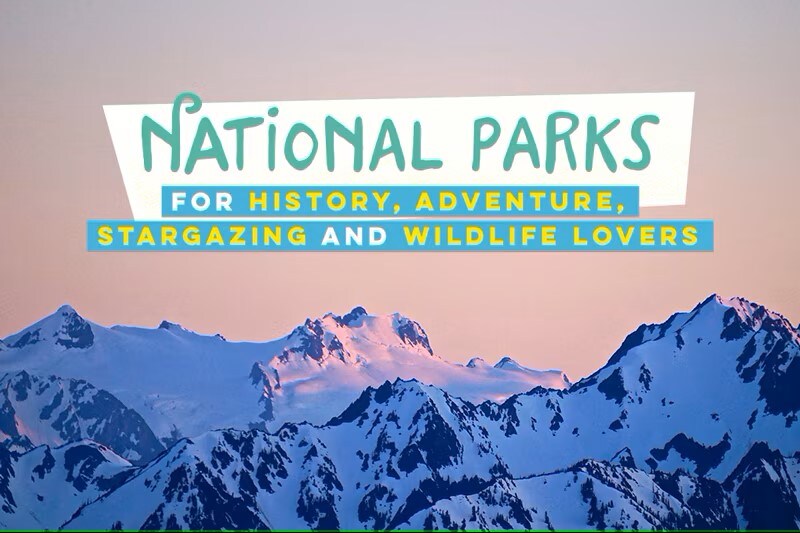
With 59 national parks across the U.S. — featuring everything from undersea coral reefs to volcanic peaks — there’s a park to fit almost every traveler’s passion. Whether you’re a history buff, an adventure-seeker, a stargazer or an animal lover, check out this roundup of America’s natural treasures and discover which best suits your fancy.
Which Park to See if You’re … a History Buff
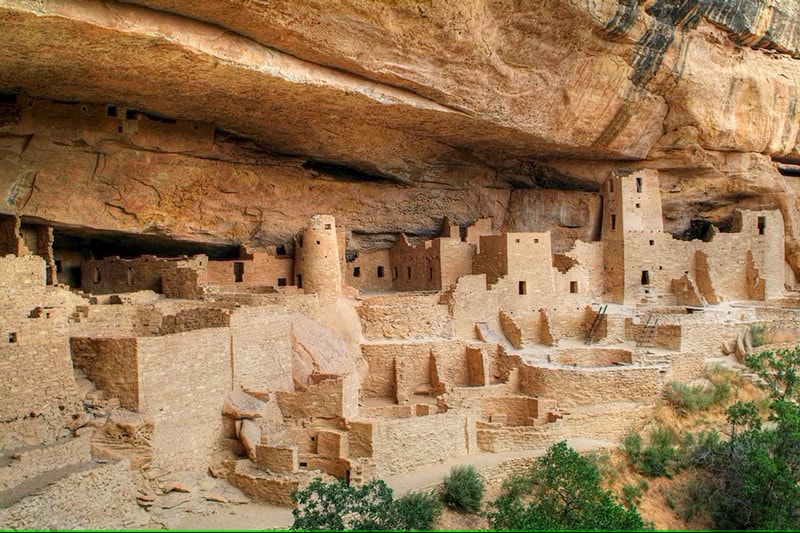
Discover Cliff Palace, a Native American cliff dwelling that Ancestral Puebloans called home until about A.D. 1300.
Mesa Verde National Park, Colorado
Home to the country’s largest archaeological preserve, Mesa Verde has delighted generations of history hounds with its amazing Ancestral Puebloan cliff dwellings tucked below overhanging rock ledges. Among this southwestern Colorado park’s nearly 5,000 archaeological sites, the largest and most famed dwelling is Cliff Palace, built between 1190 and 1260. A roughly 150-room complex accessible only on one-hour, ranger-guided tours, the site features stone towers, narrow passageways and underground ceremonial chambers known as kivas that evoke a mysterious, ancient time.
These tours also visit the ruins of other impressive cliff dwellings like the Balcony House and Long House. Tour tickets are sold at the Mesa Verde Visitor and Research Center, which houses exhibits on the Ancestral Puebloan people. Unearth more history at the park’s Chapin Mesa Archeological Museum.
How to get there
- Drive about 50 miles west from Durango-La Plata County Airport
- Drive about 250 miles northwest from Albuquerque International Sunport
Other Parks for History Buffs
Yellowstone National Park, Wyoming
Founded in 1872, the nation’s oldest national park not only showcases millions of years of geologic forces at play, but also features centuries of human history and treats Western architecture buffs to vintage structures like the 1904 Old Faithful Inn and the 1931 Fishing Bridge Museum.
Hot Springs National Park, Arkansas
Set aside as a federal recreation reservation in 1832, decades before the National Park Service existed, the smallest national park in the U.S. invites you to relax and soak your travel-weary bones in the thermal waters of its historic bathhouses.
Which Park to See if You’re … an Adventure-Seeker
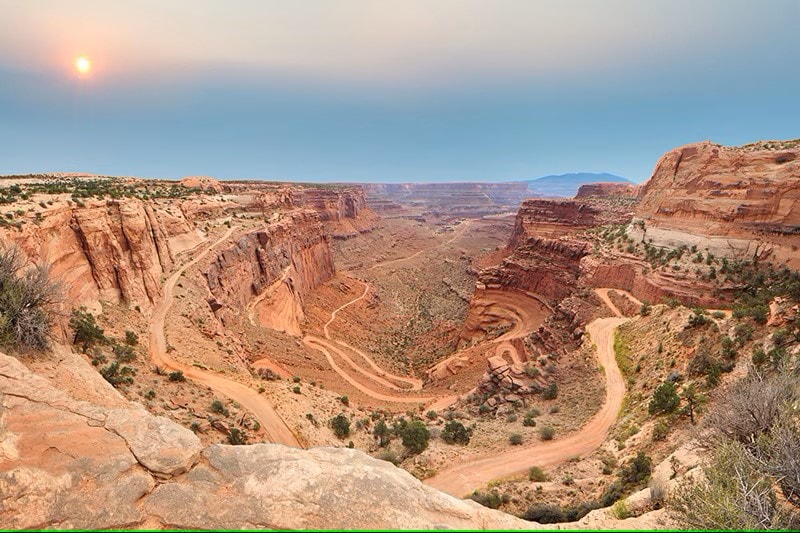
Drive or bike the switchbacks of Shafer Trail as you explore Canyonlands’ unique landscape.
Canyonlands National Park, Utah
Other southern Utah national parks like Bryce Canyon and Arches get a lot of press, but thrill-seekers know few red-rock playgrounds can top Canyonlands for raw adventure and soul-rejuvenating solace.
Near the town of Moab in the Island in the Sky district, one of four scattered units that make up the park, mountain bikers bounce along the unpaved White Rim Road — a rugged, 100-mile loop that takes two to four days to complete. Hikers can marvel at Canyonlands’ chiseled red rocks along trails ranging from short walks to overnight backpacking trips. For additional high-adrenaline activities, consider rock climbing the Titan, one of North America’s largest free-standing sandstone towers, or whitewater rafting on the Colorado River.
How to get there
- Drive about 120 miles southwest from Grand Junction Regional Airport
- Drive about 245 miles southeast from Salt Lake City International Airport
Other Parks for Adventure Seekers
Joshua Tree National Park, California
Near the desert resort of Palm Springs, opportunities for hiking, biking, horseback riding and rock climbing attract adventurous types to this arid land flush with jumbled-boulder formations and the park’s spiky, namesake trees.
Yosemite National Park, California
The stunning Yosemite Valley offers tons of fun in the great outdoors. Hiking, rock climbing and biking are popular pursuits. Or skip summer crowds and visit in the winter off-season to see the park on cross-country skis, snowshoes, a sled or ice skates.
Which Park to See if You’re … a Stargazer
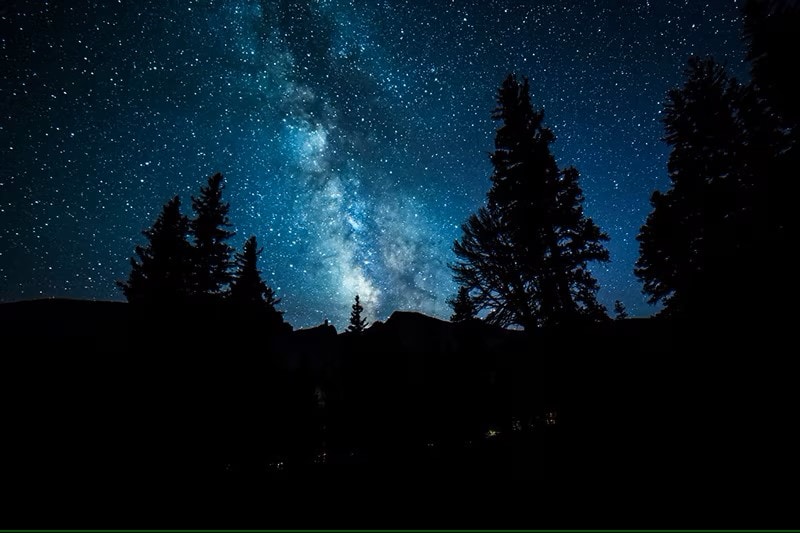
Admire the Milky Way’s glow as you peer into the sky from Great Basin National Park.
Great Basin National Park, Nevada
In one of the least-populated regions of the continental U.S., this mountainous International Dark Sky Park receives virtually zero light pollution from cities. This far out in the eastern Nevada wilderness, not even the lights of Las Vegas can steal the show.
On clear, moonless nights, you’ll be able to see the Milky Way and Andromeda galaxies with the naked eye. Mather Overlook, along the park’s scenic road, is a popular stargazing spot. For more sky viewing tips, including lunar phases and a planet guide, see the park’s handy visitor guide.
The park also offers a variety of astronomy activities, including full-moon hikes, evening and summer afternoon solar telescope viewings and an annual Astronomy Festival in September. On select Friday nights in the summer, you can even ride the Star Train, a vintage locomotive that departs the town of Ely, Nevada, for a ranger-led stargazing trip to the Great Basin area.
How to get there
- Drive about 245 miles southwest from Salt Lake City International Airport
- Drive about 300 miles northeast from Las Vegas McCarran International Airport
Other Parks for Stargazers
Death Valley National Park, California
Exceptionally dark desert skies dazzle stargazers in this geologic wonderland — the lowest, driest, hottest spot in North America. Because searing summer temperatures routinely top 110 degrees, it’s wise to visit in fall or spring, when the weather tends to be pleasant and rangers regularly give astronomy talks.
Denali National Park & Preserve, Alaska
Late fall through early spring, the hours of stargazing darkness far exceed those of daylight in this part of Alaska. If the weather is clear, you’re in store for inky black skies and an excellent chance to witness the aurora borealis, with its curtains of colorful northern lights waving across the night sky.
Which Park to See if You’re … an Animal Lover
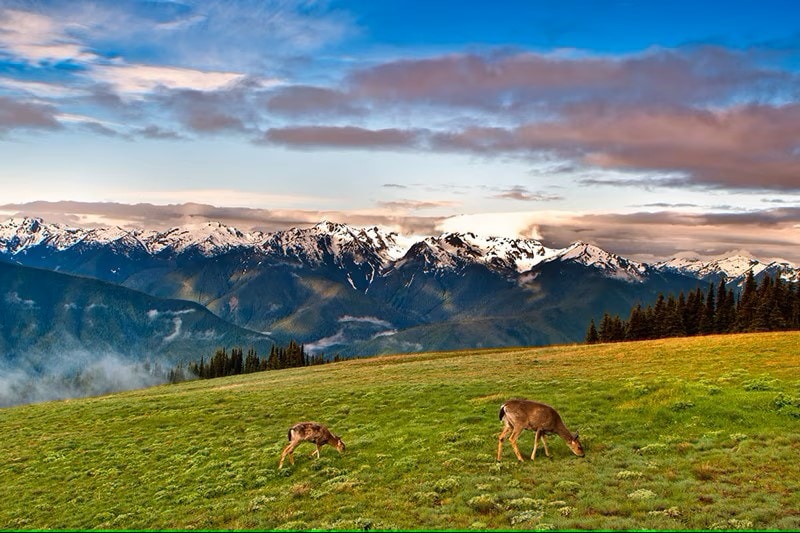
Catch young deer grazing fields of mountain grass, spotted owls in forested trees and dolphins swimming through the ocean while visiting Olympic National Park.
Olympic National Park, Washington
When a park hosts three different ecosystems (mountain, rainforest and coastal), it’s bound to be bursting with wildlife. And that’s exactly what awaits you on the gorgeous Olympic Peninsula. It’s all here — from bears romping through mountain meadows to dolphins leaping out of the deep blue Pacific Ocean.
Roosevelt elk, black-tailed deer, marmots, bears and even cougars are common in the park’s valleys and meadows; the roads and trails around the Hurricane Ridge Visitor Center offer a good opportunity to spot these mammals. In Olympic’s lush, old-growth forests, watch for spotted owls and marbled murrelets (seabirds).
Off the coast, Olympic’s waters harbor nearly 30 species of marine mammals. In spring and fall, hop aboard a gray whale-watching boat trip.
How to Get There
- Drive about 100 miles west from Seattle-Tacoma International Airport
Other Parks for Animal Lovers
Everglades National Park, Florida
Spanning the southern tip of the state, these 1.5 million acres of tropical wilderness are home to hundreds of animal, bird and fish species. Kayak or canoe the park’s vast network of wetlands and keep an eye peeled for alligators, turtles, manatees and much more.
Glacier National Park, Montana
A majestic land of snow-capped peaks, verdant valleys and, of course, glaciers, this park hosts a huge diversity of wildlife including grizzly bears, Canadian lynx, wolverines, moose and mountain goats (the park’s official symbol). Guided, small-group tours offered by companies such as Natural Habitat Adventures are a fun way to see the park.
No matter your passion, check out which rental car deals are available for your next national park vacation!
© 2025 Enterprise Holdings, Inc. All rights Reserved.
